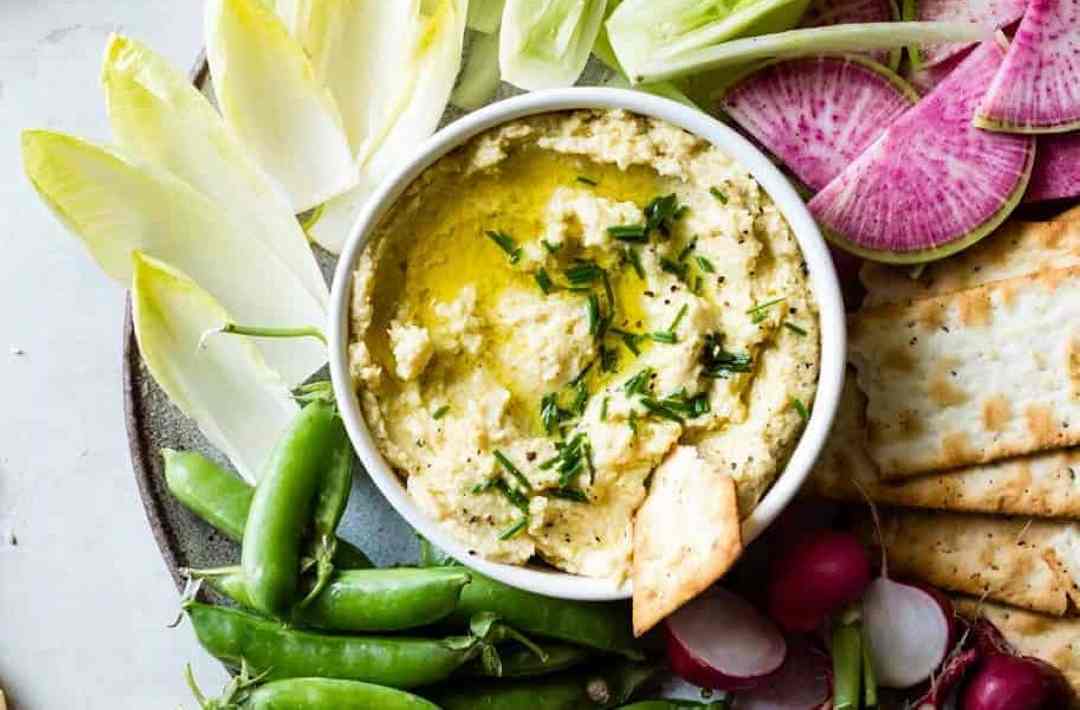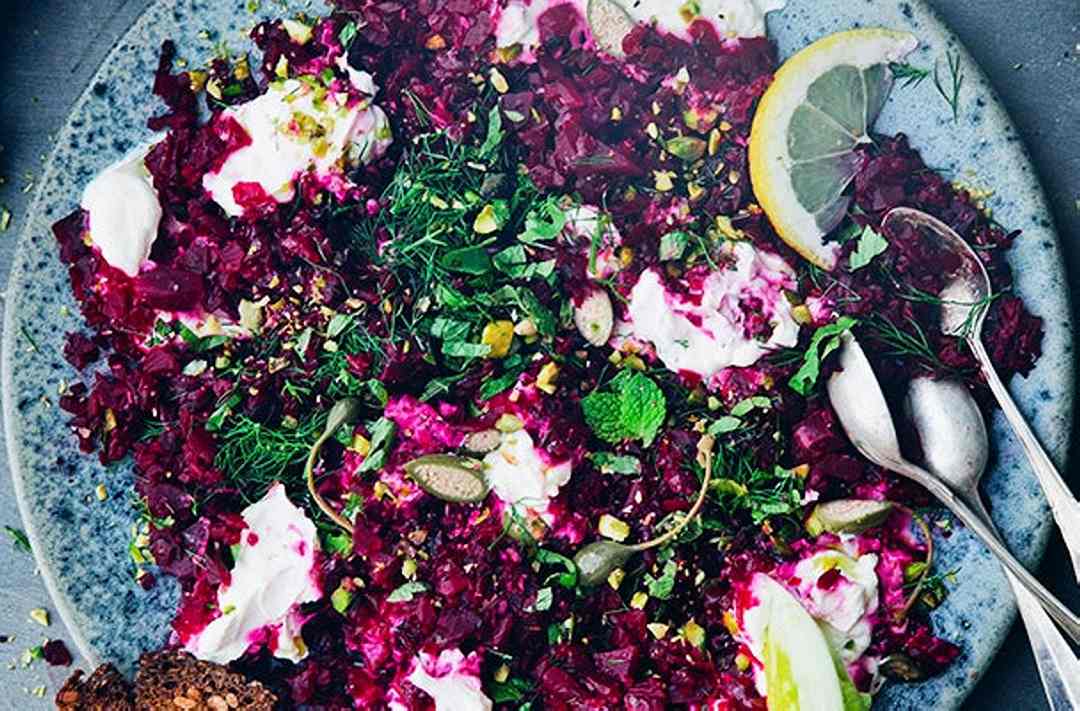

If you’re an omnivore, vegan mayos probably haven’t appeared much on your radar screen. If you’re plant-based, or just looking to incorporate more plant-based foods into your diet, you might be more familiar with them—or, at least, the DIY version, which may have elicited a few unhappy memories of trying a homemade recipe involving raw tofu, lemon juice, and a food processor.
But in the last few years, vegan mayo has emerged from the kitchen to hit store shelves. The vegan-mayo aisle is often totally packed at many larger supermarkets and health food stores these days, and no matter what your dietary persuasion is, it’s a condiment worth exploring.
Sales of vegan condiments like plant-based mayo have increased every year since 2016—and are projected to keep growing through at least 2027, according to the latest market reports.
“More Americans than ever are choosing a plant-based lifestyle, whether for the health benefits, environmental concerns, or concerns over animal welfare,” says nutrition expert Julie Upton, R.D., a registered dietitian based in the San Francisco Bay area.
And if you’re among them (or even just plant-curious!), a tasty vegan mayo can be your ticket to solid sandwiches, creamy pasta and potato salads, rich sauces and dressings, and more. Read on for everything you need to know about the condiment.
What is vegan mayo, and does it actually taste good?
Both traditional and vegan mayo are made with an oil base such as canola, sunflower, or avocado oil. But while regular mayo gets its rich, creamy texture by emulsifying the oil with egg yolks, vegan mayo is emulsified with plant-based thickeners like pea protein, aquafaba (chickpea cooking liquid often used as an egg substitute), or gums like xanthan or acacia.
So why might people look toward vegan mayo, even if they’re not eating a solely plant-based diet? There are a few reasons: The egg yolks in traditional mayo tend to give that condiment more saturated fat, which has been linked to health issues like heart disease, though research on that topic isn’t totally conclusive, as SELF reported previously. (While it’s important to note that the overall pattern of your diet matters more than just one ingredient, the American Heart Association still recommends limiting your consumption of saturated fat to 5%–6% of your daily calories.) You also have to pay closer attention to spoiling with mayo-based foods if they’re sitting out in warm weather, or even just out of the fridge. Plus, there’s the sustainability factor, as plant ingredients generally have a smaller carbon footprint than animal-based ones.
Okay, so that’s what vegan mayo is, but does it actually taste good? That’s a fair question, considering that vegan mayos, like many vegan analog foods, haven’t always had the most awesome reputation. But that’s changed in recent years. A lot.
Some of the vegan mayos out there are a dead ringer for the real thing, especially when you’re slathering a dollop on a sandwich or mixing a spoonful into a sauce or dressing. Others have more of their own flavor going on, which can also sometimes be super tasty, if you go into the experience knowing (and maybe appreciating!) that you’re not getting a carbon copy of that jar of Hellmann’s or Duke’s.
I know this, because I tried a dozen samples given to me by their makers in the name of finding an option that really sung to me. The reason I was on the lookout? Mainly because my son has an egg allergy, so we were looking for a safe alternative to use in our sandwiches and other family meals—but also because we lean toward a more plant-based, sustainable diet in general. And because I’m a food and nutrition writer and recipe developer who’s been covering this space for years, I have a pretty good sense of what tastes good, and I’ve tasted a ton of stuff out there!
How to pick the best vegan mayo
While I have a few clear-cut vegan mayo winners, it’s important to note that deliciousness is always in the eye (er, mouth?) of the eater, so even after my taste experiments, I can’t necessarily tell you which vegan mayo you’re going to love the most. Some are on the mild and creamy side, while others are tangy or a little mustardy. And because all of them basically rely on similar ingredients (an oil, an acid such as lemon juice or vinegar, a thickener, and natural flavors like sugar, mustard powder, salt, or rosemary extract), it’s hard to know what a mayo might taste like just by reading the back label.
Here’s what I can tell you: I found that vegan mayos with a whiter color and a stiffer, more mayo-like consistency tended to taste more like the conventional thing. Vegan mayos that had a more tan color or a slightly more watery consistency usually had a more assertive flavor that, while sometimes good, didn’t always line up with my expectations of what a mayo should be.
Ready to talk about what’s good? After tons of sampling (tough job, I know!) here are the mayos that made the cut for me.
All products featured on SELF are independently selected by our editors. However, when you buy something through our retail links, we may earn an affiliate commission.
-
Pinterest
Target1 Tastes exactly like what you grew up with: Hellmann’s Vegan Dressing & Sandwich Spread
Hellmann’s was always my go-to mayo before having a kid with an egg allergy. And the brand’s vegan alternative is equally satisfying. The consistency is ever so slightly less oily than the conventional stuff, but in a way that I really like. You’re getting richness and creaminess here, but without a lot of the heaviness of traditional mayos.
The main emulsifier standing in for the eggs is modified food starch, a starch usually derived from potatoes or corn, and this vegan mayo uses sunflower oil instead of the soybean in nonvegan Hellmann’s. But the ingredients used to flavor the mayo are pretty much the same—white vinegar, sugar, lemon juice, and salt. Which explains why they taste so much alike!
$4 at Target
-
Pinterest
Amazon2 Best small-brand vegan mayo: Follow Your Heart Original Vegenaise
Follow Your Heart has been doing plant-based cheeses, dips, and spreads for decades. So they know a thing or two about making a solid vegan mayo—and the proof is in the flavor. The brand’s original Vegenaise is a close match for the stuff you likely grew up eating in terms of taste and texture, and it’s great on sandwiches, in dressings and dips, or in pasta or potato salad.
The base uses canola oil, and the mayo is thickened with soy protein, but if you’re not a fan of those ingredients, no worries. FYH also offers a soy-free version made with safflower oil and pea protein that’s virtually unidentifiable from its big sister.
$5 at Amazon
Most Popular
- 5 Less Obvious Signs of Seasonal Depression You Should Definitely Pay Attention To
By Maggie O’Neill
- 42 Creative Valentine’s Day Gifts for Guys
By Sarah Madaus
- Just Some Fun Sex Toys You and Your Partner Will Love
By Gabrielle Kassel
-
Pinterest
Vitacost3 Best vegan mayo for those who like tang: Sir Kensington’s Classic Vegan Mayo
Most vegan mayos (and standard ones) have some sugar or brown rice syrup to balance out the acidity of the lemon juice or vinegar. But if you’re looking for one without any added sweeteners, here’s a good choice.
The flavor is noticeably tangier and a little bit spicy, thanks to flavorings of lemon juice, black pepper, mustard extract, and lemon oil. And the consistency is a little looser—think ketchup—than traditional mayos. But that makes it a great option for dunking! My family liked it blended with a little bit of sriracha as a dip for sweet potato and green bean fries.
$6 at Vitacost
-
Pinterest
Hive4 Best vegan mayo with an alt base: Hlthpunk Bionnaise Organic Vegan Mayo
You’ve had oat milk, but how about…oat mayo? Yep, this stuff is made from a combo of sunflower oil, oat milk, and pea protein to yield a slightly thinner but still respectable mayo. The addition of black salt adds a somewhat eggy, sulfurous touch, which gives it an extra savory flavor that I liked. It also has more unexpected ingredients—think ashwagandha, acerola, carrot juice concentrate, and turmeric—but to me, they didn’t affect the taste (for better or worse?). One other cool thing: This stuff came in a squeeze bottle, which I maybe found a little too exciting. I tested this mayo on a sandwich so I still needed a knife for spreading, but you could go utensil-free if you were adding it to a dressing or pasta or potato salad.
$6 at Hive
-
Pinterest
Instacart5 Best flavored vegan mayo: Primal Kitchen Rosemary Garlic Vegan Mayo Spread & Dip
When you find yourself craving the kind of garlicky aioli you’d get with a side of fries at a great restaurant, help yourself to some of this. The garlic and rosemary make this avocado-oil-based mayo feel a little more special, so it’s tops for amping up a sandwich, using as a dip for crackers or veggies, or thinning with lemon juice or vinegar to make a quick dressing.
$10 at Instacart
Most Popular
- 5 Less Obvious Signs of Seasonal Depression You Should Definitely Pay Attention To
By Maggie O’Neill
- 42 Creative Valentine’s Day Gifts for Guys
By Sarah Madaus
- Just Some Fun Sex Toys You and Your Partner Will Love
By Gabrielle Kassel
-
Pinterest
Thrive Market6 Vegan mayo for mess-free cooking: Thrive Market Vegan Mayonnaise
Jars are cool and all, but why hasn’t anyone thought of putting mayo in a lightweight, squirtable pouch? Oh, wait, Thrive Market did! The brand’s vegan mayo comes in a BPA-free baggie (with a tiny screw-on lid!) that nixes the need for a spoon or spatula when you’re cooking—just squeeze it onto your sandwich or salad and go.
The avocado-oil-based mayo, which is thickened with aquafaba and fava bean protein, is on the thinner, tangier side. So it’s not quite as mayo-like as some of the other picks on this list. But the extra punchiness is nice when you’re dealing with mild ingredients like pasta or potatoes. It’s a good pick if you’re packing ingredients for cooking away from home too, since the pouch is lightweight and nonbreakable.
$11$7 at Thrive Market
















